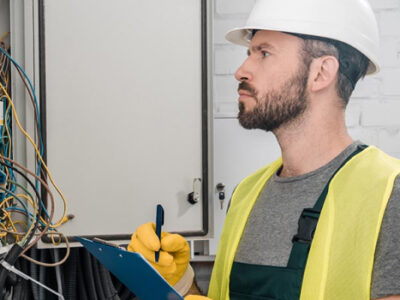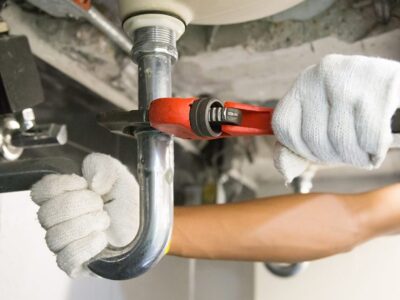Rust is a phenomenon that touches nearly every life in some way. Every day, we encounter rust when corrosion takes over metal components on our vehicles, tools, and even furniture around the home. Rust is more than just an eyesore: it can make objects unusable and its presence can signify underlying structural issues. However, with a bit of knowledge about why rust happens and how you can stop it from spreading further with the best rust penetrating spray, this often expensive and frustrating problem doesn’t have to consume your time or wallet! In this blog post we’ll explore the science behind rust formation as well as how a penetrating rust spray works to help combat it.
What is Rust and How Does it Form
Rust is the reddish-brown coating that appears on metal objects when they are exposed to air and water. It is a chemical reaction that occurs between the metal and the oxygen in the air. Rust can be formed on any metal that contains iron, but it is most commonly found on iron or steel objects. The process of rust formation requires moisture, as it is a type of corrosion that occurs when iron reacts with oxygen in the presence of water. As water molecules hit the iron surface, they break down the metal surface and create iron oxide, which we know as rust. This process can be slowed down with the use of protective coatings and paint, but eventually all unprotected metals will start to rust over time.
The Chemical Reactions that Cause Iron to Rust
Iron rusting is a natural process that occurs when iron reacts with oxygen in the presence of water or moisture. This phenomenon is a chemical reaction known as oxidation, which results in the formation of a reddish-brown coating on the surface of iron objects. Rusting is a slow process but can have a huge impact on the durability and lifespan of iron items. Essentially, rusting is a type of corrosion that weakens the iron by eating away at its surface, making it prone to cracking and crumbling. Understanding the chemistry behind rust formation can help us take preventative measures to prolong the life of our iron possessions, whether they are tools, machinery, or even vehicles.
Different Types of Rust Prevention Methods
Rust is a common problem faced by many industries that involve metal surfaces. However, with the advent of technology, there are now numerous ways to prevent rust. From coatings to inhibitors, and even galvanization, there are many options to explore. Each method has its pros and cons, and some are better suited for certain situations than others. It’s important to understand the specific needs of your project before choosing a rust prevention method. With the right approach, you can extend the lifespan of your metal surfaces and keep them looking brand new for years to come.
Benefits of Using a Rust Penetrating Spray
Rust. It’s one of those pesky problems that can plague any metal surface and leave it looking aged and unsightly. But have no fear, because rust penetrating sprays are here! Not only can these sprays help remove existing rust, but they can also prevent new rust from forming. Plus, they often contain lubricants which can help loosen stiff and stuck parts. So not only will your metal surfaces look better, but they’ll also function better too. And the best part? These sprays are often quick and easy to use, meaning you can say goodbye to rust in no time.
How to Use a Rust Penetrating Spray for Maximum Effectiveness
When it comes to tackling rust on metal surfaces, a rust penetrating spray can be a game-changer. However, not all sprays are created equal, and it’s important to use them properly if you want to get the best results. First, make sure the surface you’re spraying is clean and dry, as any dirt or moisture can interfere with the spray’s ability to penetrate the rust. It’s also a good idea to wear protective gear, such as gloves and eyewear. When you’re ready to spray, apply a generous amount to the affected area and give it time to soak in. Most sprays need at least 15 minutes to work effectively. After that, use a wire brush or sandpaper to remove the rust, wiping away any loose debris with a clean cloth. With the right technique and a quality rust penetrating spray, you can say goodbye to unsightly rust and hello to a smooth, clean surface.
Tips for Keeping Metal from Getting Rusty in the Future
Rust is an inevitable problem for anyone working with metal. The good news is that there are plenty of preventative measures you can take to keep your metal from getting rusty in the future. One of the best things you can do is keep your metal clean and dry. Rust thrives in damp, dirty environments, so make sure to wipe down any metal surfaces regularly, and store them in a dry place. You can also use a rust inhibitor or coating to protect your metal from the elements. By taking these simple steps, you’ll be able to keep your metal looking shiny and new for years to come.
In conclusion, rust is an oxidation process that occurs when iron and other metals are exposed to air and moisture. Rust can cause significant damage to metal objects if left untreated, but there are many products available to help protect against it. By understanding the chemical reactions that cause rust and preventing it through different methods, you can extend the life of your metal objects. Using a rust penetrating spray is an effective way to counter corrosion from rust. Make sure to use the product correctly for maximum effectiveness, as well as adhering to excellent preventive measures like coating metal objects with protective coatings, painting them regularly, or keeping them in dry places. With a little effort and some knowledge about rust formation and prevention techniques, you can keep all your metal items looking great for many years to come!











